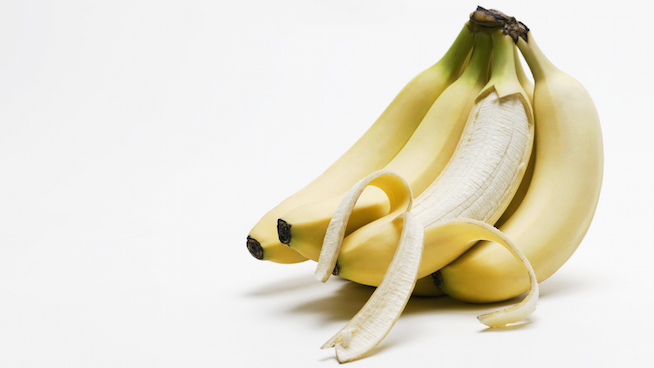What Else Are You Drinking? The Truth About BPA Dangers
You’ve probably heard that the bottled water you drink during your workout may contain Bisphenol A (BPA), a clear, synthetic compound found in plastics and epoxy. But what are the dangers of BPA, exactly, and how can you avoid them?
BPA is used in a variety of manufactured items, including plastic water bottles, office water coolers, food storage containers, canned goods, sports equipment and DVDs. If a bottle or food container has a #7 stamped on the bottom, it likely contains the material. Unfortunately, BPA can easily leach into surrounding fluids or food. Since it exhibits hormone-like properties, its use has raised safety concerns.
RELATED: BPA: Health Hazard In Your Water Bottle?
BPA Risks
Studies in 2006 identified BPA as having estrogen-like properties in animals. BPA concentrations were associated with changes in behavior, brain chemistry, reproductive organs and body size. The findings were most significant in prenatal animals; they experienced physical and neurologic difficulties after exposure. The study stated that average BPA levels in humans are above the levels used in the animal studies, making BPA dangers a cause for concern.
Several studies have identified BPAs as an endocrine disruptor, potentially interrupting neural signals that regulate hunger and fullness cues. These studies have also suggested that BPA possibly increases obesity.
BPA has also been linked to increased cancer risk by disrupting genes that defend against cancer growth. The cancers thought to be related to BPA ingestion include breast cancer, testicular interstitial cell tumors, leukemia, brain tumors and prostate cancer.
One study published in 2008 also linked BPA to heart disease, diabetes and increased levels of abnormal liver enzymes. BPA exposure caused permanent damage to DNA in mice.
Currently the Food and Drug Administration (FDA) is reviewing the safety of BPA use. Their current position is that BPA in food containers is safe, and exposure to low levels from leaching is not harmful. The World Health Organization holds a similar position. In 2012, at the request of the American Chemistry Council, the FDA placed a ban on BPA usage in baby bottles and sippy cups. Several states have also enacted their own bans on food containers using BPA.
Avoiding BPAs
- Drink from plastic bottles labeled “BPA Free.”
- Opt for a stainless steel or glass water bottle.
- Avoid plastic containers with a #7 printed on the bottom.
- Use glass or ceramic when you heat foods in the microwave to cut down on chemicals leaching into your food.
- Be selective with canned goods; buy fresh or frozen vegetables.
RECOMMENDED FOR YOU
MOST POPULAR
What Else Are You Drinking? The Truth About BPA Dangers
You’ve probably heard that the bottled water you drink during your workout may contain Bisphenol A (BPA), a clear, synthetic compound found in plastics and epoxy. But what are the dangers of BPA, exactly, and how can you avoid them?
BPA is used in a variety of manufactured items, including plastic water bottles, office water coolers, food storage containers, canned goods, sports equipment and DVDs. If a bottle or food container has a #7 stamped on the bottom, it likely contains the material. Unfortunately, BPA can easily leach into surrounding fluids or food. Since it exhibits hormone-like properties, its use has raised safety concerns.
RELATED: BPA: Health Hazard In Your Water Bottle?
BPA Risks
Studies in 2006 identified BPA as having estrogen-like properties in animals. BPA concentrations were associated with changes in behavior, brain chemistry, reproductive organs and body size. The findings were most significant in prenatal animals; they experienced physical and neurologic difficulties after exposure. The study stated that average BPA levels in humans are above the levels used in the animal studies, making BPA dangers a cause for concern.
Several studies have identified BPAs as an endocrine disruptor, potentially interrupting neural signals that regulate hunger and fullness cues. These studies have also suggested that BPA possibly increases obesity.
BPA has also been linked to increased cancer risk by disrupting genes that defend against cancer growth. The cancers thought to be related to BPA ingestion include breast cancer, testicular interstitial cell tumors, leukemia, brain tumors and prostate cancer.
One study published in 2008 also linked BPA to heart disease, diabetes and increased levels of abnormal liver enzymes. BPA exposure caused permanent damage to DNA in mice.
Currently the Food and Drug Administration (FDA) is reviewing the safety of BPA use. Their current position is that BPA in food containers is safe, and exposure to low levels from leaching is not harmful. The World Health Organization holds a similar position. In 2012, at the request of the American Chemistry Council, the FDA placed a ban on BPA usage in baby bottles and sippy cups. Several states have also enacted their own bans on food containers using BPA.
Avoiding BPAs
- Drink from plastic bottles labeled “BPA Free.”
- Opt for a stainless steel or glass water bottle.
- Avoid plastic containers with a #7 printed on the bottom.
- Use glass or ceramic when you heat foods in the microwave to cut down on chemicals leaching into your food.
- Be selective with canned goods; buy fresh or frozen vegetables.











